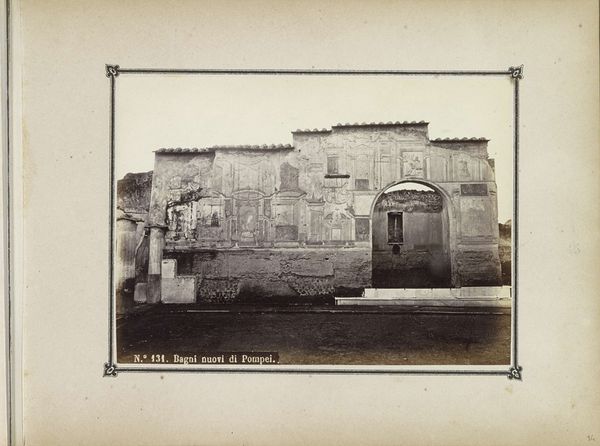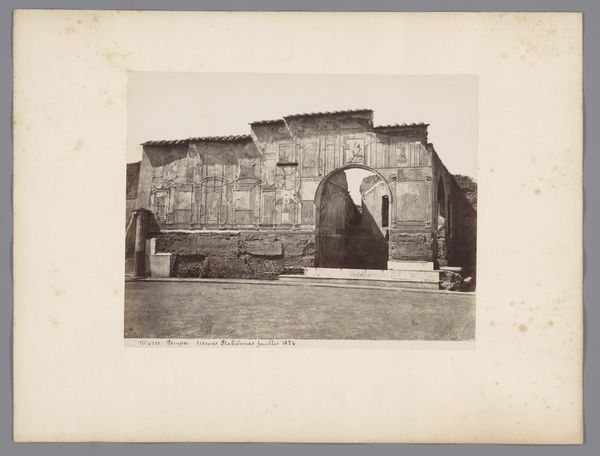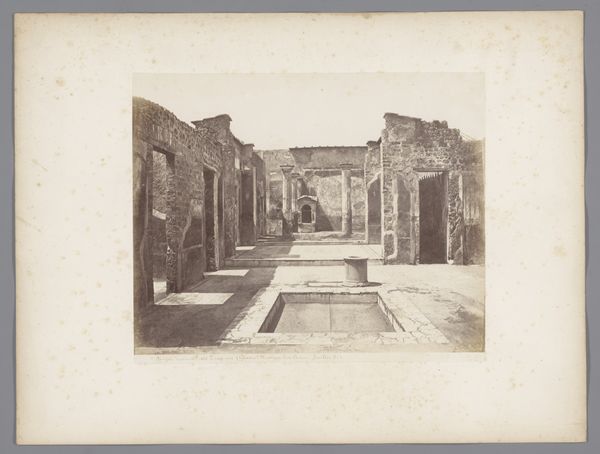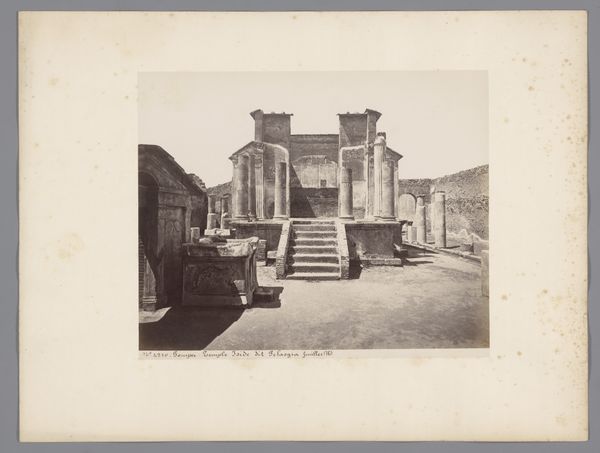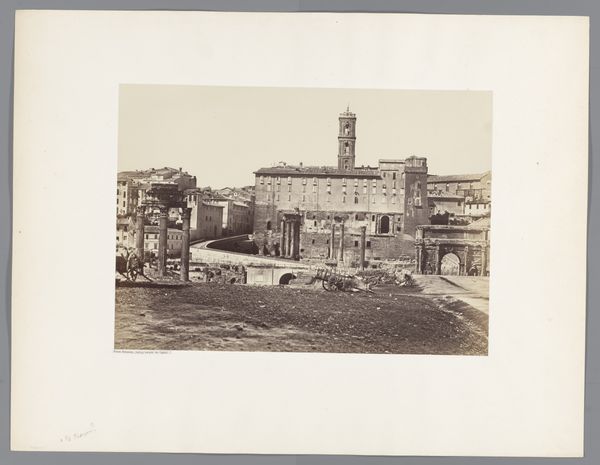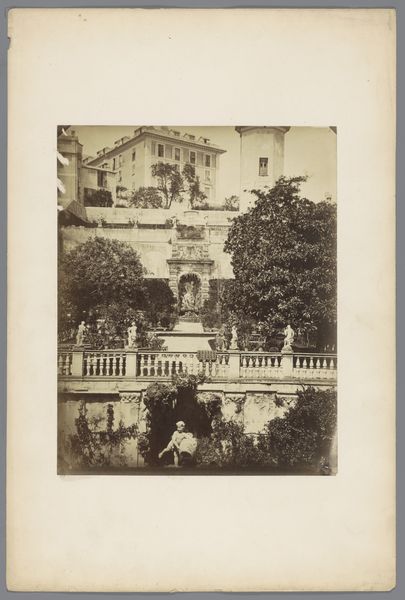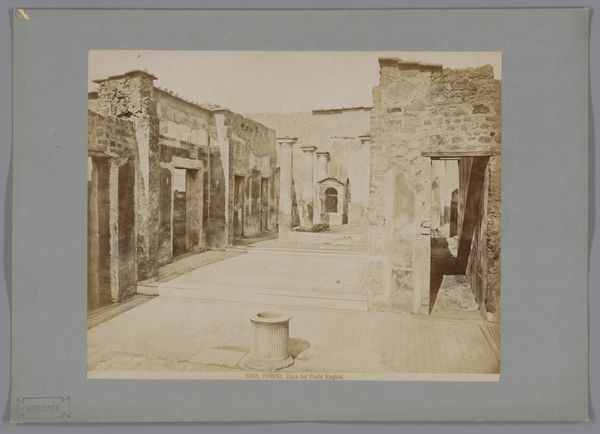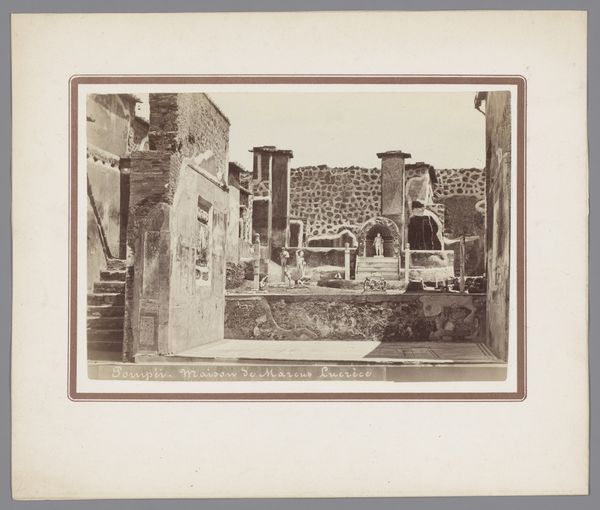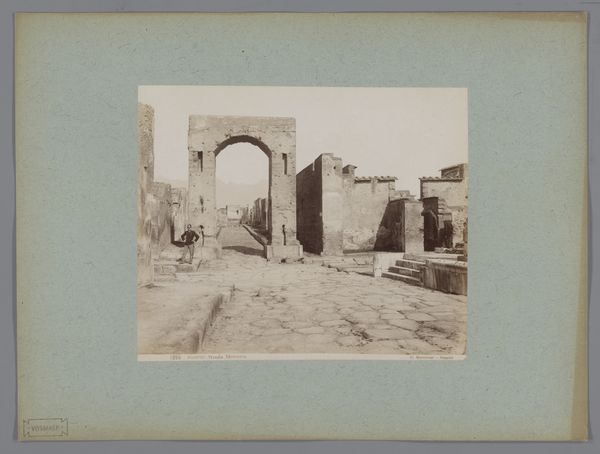
photography, albumen-print
#
landscape
#
photography
#
ancient-mediterranean
#
cityscape
#
albumen-print
Dimensions: height 200 mm, width 253 mm, height 253 mm, width 356 mm
Copyright: Rijks Museum: Open Domain
Editor: This is an albumen print from sometime between 1864 and 1881 by Giacomo Brogi, depicting the remains of the Stabian Baths in Pompeii. There’s such a haunting stillness to this image. What do you see here? Curator: I see a preserved moment, but more than that, a symbolic portal connecting us to a lost world. The photograph itself, an early form of mass media, attempted to make this ancient civilization accessible. But consider the "baths"—these weren't just places for hygiene, but crucial communal spaces. Do you notice any symbolic significance that remains within the architecture, despite its ruined state? Editor: The archway, maybe? It feels like a grand entrance, even now. But beyond that… I'm not sure. Curator: Precisely. Archways, historically and architecturally, frame transitions, marking passage from one state to another. Now consider what that means, viewing a bath. This space physically symbolized social hierarchy and rituals that shaped daily life, and, further back, possibly ritual bathing practices to a range of cultures? This structure’s endurance, photographed, allows modern society a way to access communal behaviors lost to the modern self, fragmented and isolated by other architectures. Editor: So, the photograph is preserving a specific, idealized view of community? Curator: Precisely. The act of selecting this view—emphasizing its scale, isolating it—creates a cultural artifact, layering our understanding and nostalgia over what truly existed. What does seeing this preserved tell you about ourselves now? Editor: That's fascinating, I hadn't considered the photographer's choices creating new symbols on top of existing ones. This albumen print doesn't just document, but interprets. Curator: Indeed, it builds bridges of time, allowing continuous dialogue. Every viewing is an archaeological dig, unveiling fresh meaning, enriching our communal psyche through a picture.
Comments
No comments
Be the first to comment and join the conversation on the ultimate creative platform.
